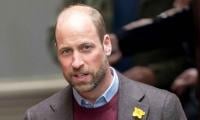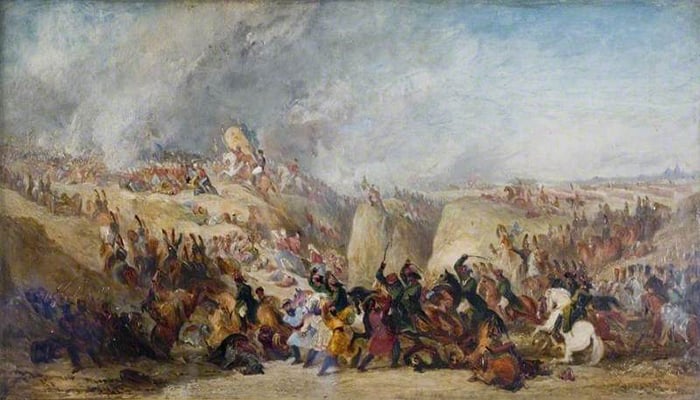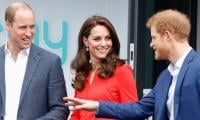‘British captured Karachi two years before Battle of Hyderabad’
An event on Saturday evening discussed the British rule in Sindh, in which educationist and author Prof Aijaz Qureshi said the Battle of Hyderabad was fought on March 24, 1843, between the forces of British East India Company and the Talpur Mirs of Sindh.
The seminar was titled ‘Sindh during and after British Rule’. It was held at the Pakistan American Cultural Centre.
Former representative of Pakistan to United Nations Abdullah Hussain Haroon said one must know that the dates of the British conquest of Sindh and the British conquest were not the same. “Karachi was conquered by three British ships two years earlier than Sindh,” he said.
“If you want to know the old residents of Karachi, there’s an area behind Ranchor Line known as Doli Khata,” he said, adding that back then there was only one water tank in Karachi which was used for about 100 years, whereas, Dhabeji came into existence much later.
Talking about his grandfather Sir Abdullah Haroon who was a British Indian politician, Hussain Haroon said he did all his politics with the first elected mayor of Karachi, Jamshed Nusserwanjee. “His [Nusserwanjee’s] house and our house were adjacent to each other,” he said, adding that after Quetta’s massive earthquake, Nusserwanjee and Haroon together established a camp of 40,000 people for people of Quetta in Karachi.
Former additional chief secretary of Sindh Ghulam Sarwar Khero shed light on how Sir Charles James Napier conquered Sindh and made Hyderabad its capital. Later, he explained that Napier changed his strategy and considering the seaport to be important, Karachi was made the capital.
After three years of development, he said, Napier decided to strengthen the administration of the city.
Later, the Sindh presidency was given to Bombay as the province was not in a great financial position. The commissioner system, Khero said, was introduced in the province and the commissioners back then decided to promote the local language and it was decided that in 18 months, Hindus, Muslims, Christians and Parsis would learn Sindhi language, for which even committees were formed. Since there wasn’t much literature available, teachers of madrasas were taken on board and asked to write books on different subjects in Sindhi.
Then, he said, the need for educational institutions arose and schools and colleges were established in which many locals were enrolled and course books were written.
Initially, there were three districts in Sindh that were Hyderabad, Karachi and Shikarpur. Later, Sukkur, Larkana and Nawabshah districts were added.
In 1936, Sindh was separated from the Bombay presidency and then chief secretaries, chief ministers and governors were appointed and elected. Certain laws of the British era such as the police law of 1870 were still followed in the province, Khero said.
-
 Amazon Employees’ Break-time Fight Ends In Murder In Texas
Amazon Employees’ Break-time Fight Ends In Murder In Texas -
 Peter Jackson Reveals A Viggo Mortensen Mishap In 'LOTR' Fans Totally Missed
Peter Jackson Reveals A Viggo Mortensen Mishap In 'LOTR' Fans Totally Missed -
 Marsh Farm: Work Underway On Andrew Mountbatten-Windsor's New Home
Marsh Farm: Work Underway On Andrew Mountbatten-Windsor's New Home -
 'Rip' Director Dishes On Matt Damon, Ben Affleck's ‘brotherly’ Dynamic
'Rip' Director Dishes On Matt Damon, Ben Affleck's ‘brotherly’ Dynamic -
 Meghan Markle Handed Strict Warning: ‘You’re Playing With Fire In A High Risk, High Noise’ Game’
Meghan Markle Handed Strict Warning: ‘You’re Playing With Fire In A High Risk, High Noise’ Game’ -
 Paul McCartney Reveals How Close He Came To Giving Up Music
Paul McCartney Reveals How Close He Came To Giving Up Music -
 Kate Middleton’s Secret Message Decoded: ‘She’s Done With All This!’
Kate Middleton’s Secret Message Decoded: ‘She’s Done With All This!’ -
 Police Uncover Secret Cannabis Empire Ran By New York Woman
Police Uncover Secret Cannabis Empire Ran By New York Woman -
 'Euphoria' Season Three Trailer Shows Chaotic Life After High School
'Euphoria' Season Three Trailer Shows Chaotic Life After High School -
 Marisa Abela Opens Up About Impact Of Cancer Treatment On Lifestyle
Marisa Abela Opens Up About Impact Of Cancer Treatment On Lifestyle -
 Kensington Palace Shares Video Of Windsor Castle Ceremony
Kensington Palace Shares Video Of Windsor Castle Ceremony -
 Prince Harry’s Future Inheritance Causes Fears: ‘William Doesn’t Want To Support Meghan’s Ambitions’
Prince Harry’s Future Inheritance Causes Fears: ‘William Doesn’t Want To Support Meghan’s Ambitions’ -
 Gabrielle Union, 53, Delights Fans With Bold Photos
Gabrielle Union, 53, Delights Fans With Bold Photos -
 World's Biggest Fish Market Is Set To Open In Sydney: First Look Revealed
World's Biggest Fish Market Is Set To Open In Sydney: First Look Revealed -
 Ariana Grande, Jonathan Bailey Reuniting For THIS Project
Ariana Grande, Jonathan Bailey Reuniting For THIS Project -
 Sydney Sweeney Saved Herself From Brutal Roast: Here's How
Sydney Sweeney Saved Herself From Brutal Roast: Here's How




